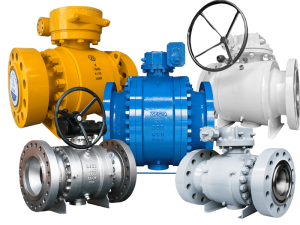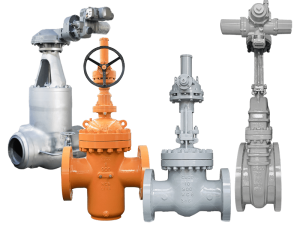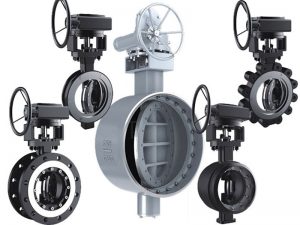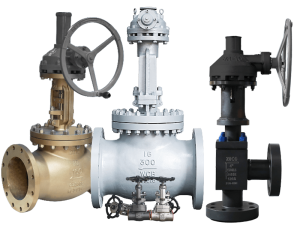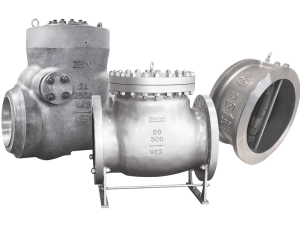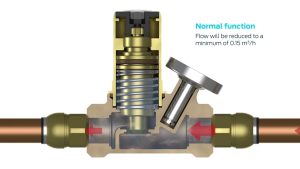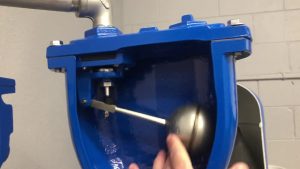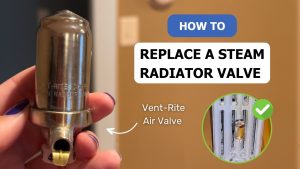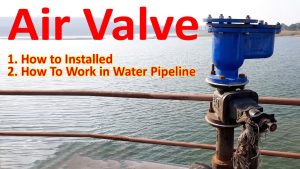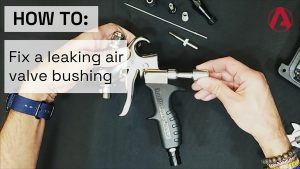Ball valves are a common type of valve used to control the flow of liquids and gases in piping systems across various industries. But what exactly is a ball valve and how does it work? In this comprehensive guide, I’ll explain everything you need to know about these versatile valves.
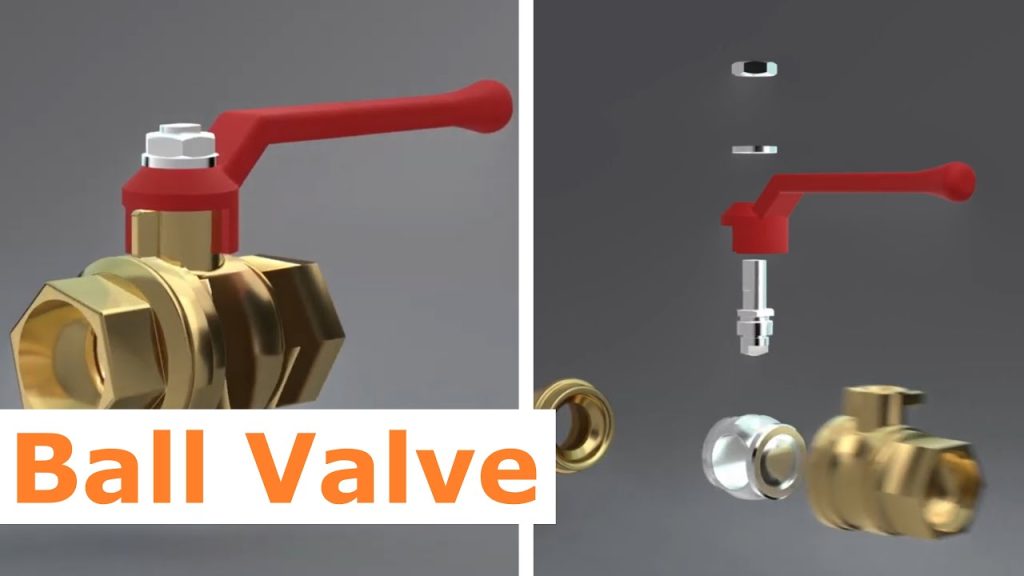
Table of contents
What is a Ball Valve?
A ball valve is a quarter-turn rotary motion valve that uses a ball-shaped disk to stop or start fluid flow. The ball has a bore (hole) running through the center and when the bore is aligned in the same direction as the pipeline, it allows media flow. When rotated 90-degrees, the bore becomes perpendicular to the flow, stopping it.
Ball valves are mainly used to start and stop fluid or gas flow, but specialized valve types allow for flow throttling. They are quick and easy to open/close, provide reliable sealing, have low pressure drop, and are suitable for a wide range of fluids.
As seen in the ball valve diagram above, the main components are:
- Ball – Rotates to align or unalign the central bore hole to allow or stop flow.
- Stem – Connects to the ball to allow rotation via manual or automated actuators.
- Seat seals – Seal against the ball in closed position to prevent leakage.
- Body – Houses internal components and connects to pipeline.
What is a Full Port Ball Valve?
A full port ball valve (also called full bore ball valve) is a quarter-turn valve designed with a spherical flow control element whose internal bore matches the diameter of the connected pipeline. This creates an uninterrupted flow path when fully open, allowing fluids to pass through without significant restrictions.
What is a Ball Valve in Plumbing?
In plumbing, a ball valve is a quarter-turn valve that controls the flow of water, gas, or other fluids by rotating a hollow, perforated ball inside the valve body.
What is a Slip Ball Valve?
A slip ball valve is a specialized type of ball valve designed for simplified installation and adaptability in fluid control systems. Its core innovation lies in a push-to-connect mechanism that eliminates the need for threading, welding, or soldering, making it ideal for quick repairs or modifications in rigid piping systems.
What is a 2 Piece Ball Valve?
A 2-piece ball valve is a type of ball valve designed with two main body sections that connect to form a complete valve. It balances simplicity, durability, and affordability, making it a common choice for applications where frequent disassembly isn’t required.
How Do Ball Valves Work?
Ball valves work by rotating the ball 90-degrees to align or unalign the bore with inlet and outlet ports inside the valve body. This opens or closes the flowpath through the valve.
To open the valve, the ball is rotated so that the bore lines up with ports, allowing unobstructed forward flow. Closing simply requires rotating 90-degrees until the bore crosses perpendicular to the ports. The ball seals against seats on both sides when closed to prevent leakage.
Ball valves only require a 1/4 turn to go from fully open to fully closed. This makes them superior in applications needing quick shutoff compared to alternatives like gate valves. Their compact size, simple operation, and reliable sealing also make ball valves a popular choice across various industries and piping systems.
Types of Ball Valves
There are various types of ball valves available to suit different industrial applications, fluids, pressures, and temperatures. Common ball valve types include:
Two-Piece Valves
Two-piece ball valves have split casing allowing for inline maintenance without removing from pipework. The assembly bolts together end-to-end enclosing the ball and seats inside. Two-piece valves may be full or reduced bore.
Benefits: Ease of maintenance, full-bore option available.
Applications: Water, oils, gases.
Three-Piece Valves
Three-piece ball valves have a removable center section between two end connectors. This allows disassembly for cleaning and maintenance without removing from pipe.
Benefits: Improved maintainability, suitable for sanitary applications.
Applications: Food processing, pharmaceuticals.
Trunnion Mounted
Trunnion valves have ball supported on both sides for heavier duty applications. The seats are spring-loaded allowing for higher pressures and reduced torque requirements.
Benefits: Higher pressure rating, lower operating torque.
Applications: Natural gas, steam, aggressive chemicals.
V-Port & Characterized Control
V-port and characterized ball valves have modified ball or seats allowing flow regulation for throttling applications. They provide higher accuracy flow control compared to conventional ball valves.
Benefits: Accurate flow throttling capability.
Applications: Chemical processing, custody transfer.
There are also one-piece, top-entry, cryogenic, and other special-purpose valve variations to suit particular installation needs.
Ball Valve Components
The main components in a ball valve assembly include:
Valve Body
The body houses all internal components and connects the valve to pipeline or equipment. Materials like brass, carbon steel, stainless steel, bronze, plastic are used based on the application.
Ball
The ball with a bore through the center rotates to regulate flow. Balls are typically metallic and may be solid or hollow. Hollow balls are lighter but solid balls handle higher pressures. Chrome plating is added for corrosion and wear resistance.
Stem
The stem connects to top of ball allowing rotation via manual or automated actuators. Stem packing prevents pressure leaks.
Seats
Seats seal against the ball during closure. Common seat materials include PTFE, rubber, nylon, and metal to handle various pressures and temperatures.
Bonnet
A bonnet screws onto the body protecting the stem packing and bearing from exposure to the process media.
Actuators
Manual handles or automated actuators interface with stem to allow remote opening/closure of the valve. This includes electric, pneumatic, and hydraulic powered actuators.
Advantages of Ball Valves
There are several beneficial reasons ball valves are used instead of other valve designs like gate, globe, or butterfly valves:
- Quick, quarter turn operation – Only 90° rotation between fully open and closed.
- Compact, space-saving design – Smaller than comparable gate or globe valves.
- Reliable shutoff – Ball seals tightly against seats for no-leak closure.
- Low flow restriction – Full bore options available allowing full pipe flow area.
- Durable, long lifespan – Repeated open/close cycles pose no issues. Can operate reliably for decades.
- Low maintenance – Only occasional seat seal replacement needed.
- Suitable for throttling – V-port and characterized valves allow flow regulation control.
- Bidirectional flow – Handle flow equally well in both forward and reverse directions.
- Variety of sizes & materials – Available from 0.5cm to 60cm sizes in metallic, plastic, and alloy materials to suit various applications and budgets.
These beneficial functionalities make ball valves versatile for controlling flow in residential, commercial, and heavy industrial applications.
Applications of Ball Valves
Thanks to their compact size, ease of operation, and reliable sealing, you’ll find ball valves suited for flow control across a diverse range of piping systems:
Plumbing – Under sinks, toilets, baths, gardens, and laundries for water supply regulation.
Gas services – Natural gas and LPG systems for isolation and emergency shutoff.
Fire sprinkler systems – Deluge valve water inlet control and test ports.
HVAC – Chillers, boilers, radiators, vents for liquids and gases.
Industrial – Steam, acids, hydrocarbons processing with high pressure/temperature needs.
Marine – Bilge, ballast, fuel oil, fresh & sea water systems.
Aviation fueling – Refuel vehicles, pipeline transfer stations, and jet fuel handling.
Hydraulic power – Fluid power packs, cylinders, and mechanical presses.
Pneumatics – Air compressors, actuators, and process control valves.
So whether it’s a simple garden hose splitter or massive natural gas transfer station, you’ll likely find a ball valve inside regulating flow. Their flexibility across sizes, pressures, fluids, and industries make them a true jack-of-all-trades in the world of fluid handling.
In Conclusion
A ball valve is a compact, versatile valve design used to start and stop fluid or gas flow via a 1/4 turn ball with a bore hole through the middle. Aligned vertically, flow passes through unobstructed. When turned 90-degrees by the handle or actuator, flow stops instantly. This makes them ideal for applications needing quick, reliable shutoff.
Various ball valve configurations exist for different pressure, temperature, and material compatibility needs. Their easy to use, long lasting durability, and ability to regulate flow in most any liquid or gas makes ball valves one of the most ubiquitous and versatile modern valve designs across residential, commercial, and industrial applications worldwide.
I hope this guide has cleared up exactly what a ball valve is, how they work, their components, benefits, and common applications across piping systems small and large. Thanks for reading!

